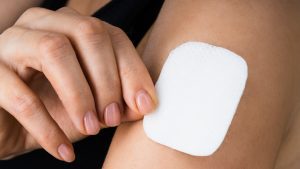
Researchers from the University of Eastern Finland discuss their findings from the world’s longest-running follow-up on bone mineral density in postmenopausal women.
Osteoporosis is the most common metabolic bone disease, characterised by low bone
mineral density (BMD) and structural weakening of the bones. The condition is most commonly seen in women due to changes that occur after menopause – and the fact that women have a lower peak bone mass to begin with. However, osteoporosis has become increasingly common in men, too.
Launched in 1989, the Kuopio Osteoporosis Risk Factor and Prevention Study (OSTPRE) is a population-based prospective cohort study, which was originally designed to investigate factors associated with bone mineral density, bone loss, falls, and fractures in a population of 14,220 peri- and postmenopausal women. The scope of the OSTPRE study has since been broadened to also include physical, psychological, and social factors related to healthy ageing and mortality. Thanks to its unique, long-term design and use of data from various national health registers, OSTPRE allows the identification of risk and protective factors for several somatic and mental health outcomes.
The new findings on postmenopausal bone loss show the strength of large and long-running population-based studies. A randomised sample of 3,200 women from the OSTPRE cohort were invited in 1989 to BMD measurements which were repeated every five years during the 25-year follow-up period. The data showed that bone loss in postmenopausal women is considerably lower than previously assumed on the basis of smaller and shorter follow-up studies. The researchers found that BMD at the femoral neck bone in postmenopausal women only decreased by an average of 10% during the 25-year follow up, compared to earlier – and considerably grimmer – estimates of bone loss being even more than 20%.
Smaller study samples sometimes lead to conclusions that do not hold true at the population level.
Cornerstones of good bone health in postmenopausal women
Peak bone mass, achieved at the age of 30 to 40 years, is an important determinant of BMD later in life. Several diseases may cause secondary osteoporosis and increase the bone loss rate. Nutrition, most importantly calcium, vitamin D and protein intake, are important for better bone health. Indeed, the Finnish population consumes more dairy products in comparison to many other nations. In addition, hormonal therapy is fairly common among Finnish postmenopausal women.
In large population-based studies like the OSTPRE study, external factors are taken into consideration by combining the population-based data with National Health Care Registers, validating any diseases affecting bone health. Also, the vast amount of health data from comprehensive questionnaire information is used to predict outcomes related to osteoporosis.
Numerous risk factors, such as increasing age, low body mass index (BMI) and chronic illnesses causing immobilisation or use of bone-affecting medication are related to decreased BMD and osteoporosis. Postmenopausal status also increases the risk of osteoporotic BMD, as bone loss accelerates during menopausal transition.
However, there are also protective factors. In our study, the most significant factor protecting against bone loss was hormone replacement therapy. Weight gain during the follow-up also protected against bone loss.
In summary, the cornerstones of good bone health in the elderly are high peak bone mass achieved before menopause, a healthy weight, and proper treatment of diseases associated with the risk of secondary osteoporosis.
Screening continues to play an important role
Screening of osteoporosis should be based on risk of low-trauma energy fractures. Screening of osteoporosis in patients with low energy fractures continues to play an important role in bone health in postmenopausal women. According to current knowledge, the risk of women in their 50s getting a fracture of some kind during their remaining life is 40%. For men of the same age, the risk is around 15%. Importantly, a previous fracture significantly increases the risk of suffering a new one.
Population-based screening of BMD alone has proven not to be cost-effective. Currently, the most validated tool for screening of low-trauma energy fractures is the Fracture Risk Assessment Tool (FRAX). BMD measurements have been shown to predict low-trauma energy fractures, but also other independent risk factors should be taken into account.
Back in 1989 when the OSTPRE study started, understanding of osteoporosis was far more limited than it is today. The condition has also become increasingly common in men – and should be studied. In men, osteoporosis tends to be associated with certain medical conditions, medications, and lifestyle factors, whereas in women, age and menopause are more significant risk factors.

Reliable measurements from the femoral neck
The randomised sample of 3,200 women underwent dual-energy X-ray absorptiometry (DXA) measurements at the femoral neck every five years throughout the 25-year follow-up period. DXA is considered the gold standard for measuring bone mass. It is known that bone loss would be higher at the lumbar spine than at the femoral neck, but DXA measurement of the lumbar spine is prone to falsifying factors, such as degenerative changes of the spine, calcification of the major arteries or inherent vertebral compression fractures, which may affect the BMD value. Therefore, femoral neck BMD is considered more reliable in an elderly population and is primarily used for the diagnosis of osteoporosis.
Observational studies have previously given larger estimates of annual bone loss. It is known that the peak bone mass varies between genders, race, and nationality, and is affected by genetics. The present study brings valuable information about postmenopausal bone loss in northern Caucasian women.
When interpreting the current results, it should be noted that, although the mean loss was 10% in the cohort, there were women who lost bone more than the average of the present population. Patients in the first quartile lost 0.9% of their initial BMD each year, or 22.5% at 25 years. Those in the second quartile lost 0.5% of their initial BMD each year, or 12.5% at 25 years; those in third quartile lost 3% of their initial BMD each year or 7.5% at 25 years, and those in the fourth quartile lost 1% of their initial BMD each year or 2.5% at 25 years.
Furthermore, some women with poor health might not come to their follow-up BMD measurement; causes for these with regards to general health remain to be resolved.
Lessons learned: future research into osteoporosis and bone health
Long-term population-based studies are needed in the future to produce observational data on the risk factors for bone loss and fractures. While such studies are expensive and time consuming, they produce data not obtainable from other kinds of study settings.
Joonas Sirola
Associate Professor
School of Medicine, Institute of Clinical Medicine
University of Eastern Finland
Heikki Kröger
Professor of Surgery, Orthopaedics and Traumatology
School of Medicine, Institute of Clinical Medicine
University of Eastern Finland
This article is from issue 20 of Health Europa Quarterly. Click here to get your free subscription today.









